Yona Friedman
Yona Friedman was born in Budapest, Hungary (1923).
The artist studied at the Technical University in Budapest, before continuing his training from 1945 to 1948 at the Technion in Haifa, Israel, where he worked as an architect until 1957. In 1953-54, he met Konrad Wachsmann, whose studies on prefabrication techniques and three-dimensional structures had a considerable influence on him. In 1954, together with some inhabitants of Haifa, Friedman embarked upon an initial experiment involving housing designed by the occupant, but this project never reached completion. In 1956, at the 10th International Congress of Modern Architecture (ICMA) in Dubrovnik, modernism was called into question by his universalist approach and his belief in progress. At the Congress, when people were taking “mobile architecture “to mean the mobility of the dwelling” the “mobile home“ for example” Friedman exhibited for the first time the principles of an architecture encompassing the on-going changes required to provide “social mobility”, based on dwellings and town-planning provisions that could be composed and re-composed, depending on the intentions of the occupants and residents. The Dubrovnik debate gave rise to several think-tanks within the International Congresses, as well as beyond them. Thus it was that in December 1958, Friedman founded the Mobile Architecture Study Group (MASG) which, up until 1962, would focus on the adaptation of architecture to the changes occurring in modern life. He was joined by Kühne, Otto, Ruhnau, Hansen, Frieden and, after 1960, Schulze-Fielitz and Maymont.
He received many awards along his carrier, in 1967 Grand Prix de Recherche et Formes de Demain, Paris, FR, in 1972 Architecture Award of the Akademie der Wissenschaften, Berlin, DE and in 1976 he was dressed up as Honorary member of the Koninklijke Academie van Beeldende Kunsten,Amsterdam, NL
His works are in various PUBLIC COLLECTIONS, United States, Museum of Modern Art (MoMA) New York City, NY, Poland, Museum of Modern Art in Warsaw, Warsaw, France, Musée d’Art Contemporain Lyon, Lyon and Italy, MAXXI – Museo nazionale delle arti del XXI secolo, Rome.
Yona Friedman was born in Budapest, Hungary (1923).
The artist studied at the Technical University in Budapest, before continuing his training from 1945 to 1948 at the Technion in Haifa, Israel, where he worked as an architect until 1957. In 1953-54, he met Konrad Wachsmann, whose studies on prefabrication techniques and three-dimensional structures had a considerable influence on him. In 1954, together with some inhabitants of Haifa, Friedman embarked upon an initial experiment involving housing designed by the occupant, but this project never reached completion. In 1956, at the 10th International Congress of Modern Architecture (ICMA) in Dubrovnik, modernism was called into question by his universalist approach and his belief in progress. At the Congress, when people were taking “mobile architecture “to mean the mobility of the dwelling” the “mobile home“ for example” Friedman exhibited for the first time the principles of an architecture encompassing the on-going changes required to provide “social mobility”, based on dwellings and town-planning provisions that could be composed and re-composed, depending on the intentions of the occupants and residents. The Dubrovnik debate gave rise to several think-tanks within the International Congresses, as well as beyond them. Thus it was that in December 1958, Friedman founded the Mobile Architecture Study Group (MASG) which, up until 1962, would focus on the adaptation of architecture to the changes occurring in modern life. He was joined by Kühne, Otto, Ruhnau, Hansen, Frieden and, after 1960, Schulze-Fielitz and Maymont.
He received many awards along his carrier, in 1967 Grand Prix de Recherche et Formes de Demain, Paris, FR, in 1972 Architecture Award of the Akademie der Wissenschaften, Berlin, DE and in 1976 he was dressed up as Honorary member of the Koninklijke Academie van Beeldende Kunsten,Amsterdam, NL
His works are in various PUBLIC COLLECTIONS, United States, Museum of Modern Art (MoMA) New York City, NY, Poland, Museum of Modern Art in Warsaw, Warsaw, France, Musée d’Art Contemporain Lyon, Lyon and Italy, MAXXI – Museo nazionale delle arti del XXI secolo, Rome.
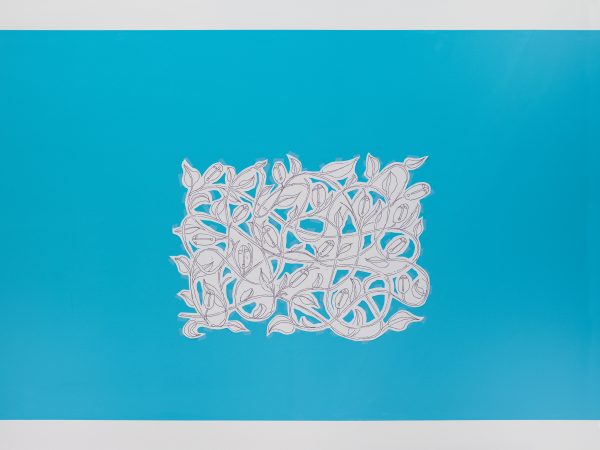 L’Arbre au Soleil et la Lune au Jungle d’Amazonas (Les fleurs), 2019Mixed media
L’Arbre au Soleil et la Lune au Jungle d’Amazonas (Les fleurs), 2019Mixed media
variable dimensionsMise en espace Jean-Baptiste Decavèle, Fonds de Dotation Denise et Yona Friedman
Edition 1/3 + 1 AP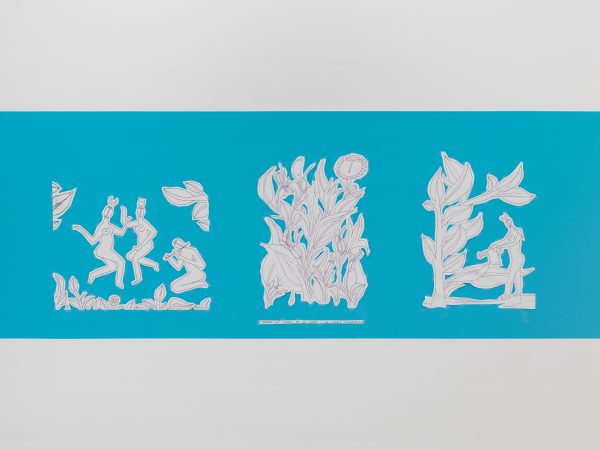 L’Arbre au Soleil et la Lune au Jungle d’Amazonas (Nature), 2019Mixed media, 3 drawings
L’Arbre au Soleil et la Lune au Jungle d’Amazonas (Nature), 2019Mixed media, 3 drawings
120×290 cm
variable dimensions
Mise en espace Jean-Baptiste Decavèle, Fonds de Dotation Denise et Yona Friedman
Edition of 3 + 1 AP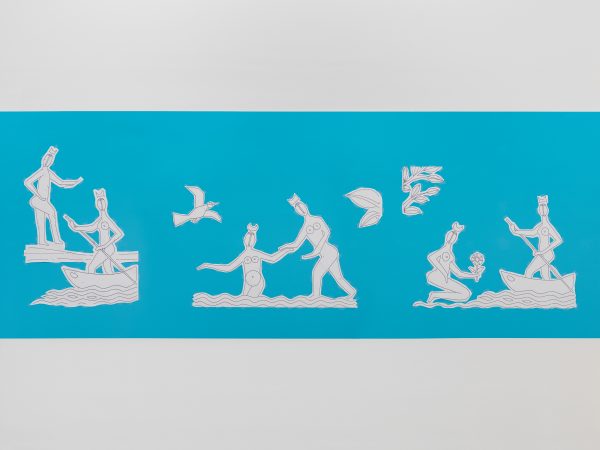 L’Arbre au Soleil et la Lune au Jungle d’Amazonas (L’eau), 2019Mixed media, 3 drawings
L’Arbre au Soleil et la Lune au Jungle d’Amazonas (L’eau), 2019Mixed media, 3 drawings
variable dimensionsMise en espace Jean-Baptiste Decavèle, Fonds de Dotation Denise et Yona Friedman
Edition 1/3 + 1 AP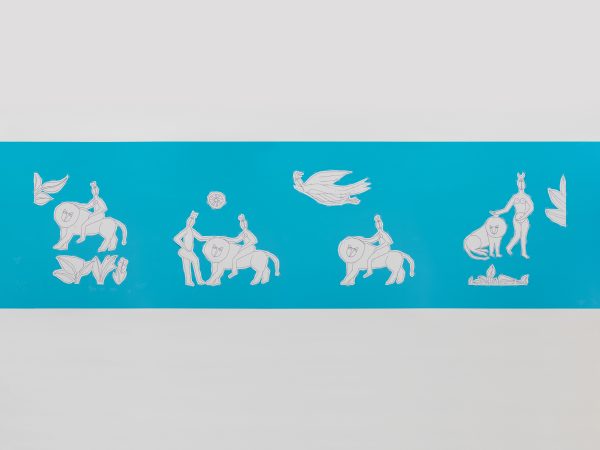 L’Arbre au Soleil et la Lune au Jungle d’Amazonas (Animaux), 2019Mixed media, 4 drawings
L’Arbre au Soleil et la Lune au Jungle d’Amazonas (Animaux), 2019Mixed media, 4 drawings
variable dimensionsMise en espace Jean-Baptiste Decavèle, Fonds de Dotation Denise et Yona Friedman
Edition 1/3 + 1 AP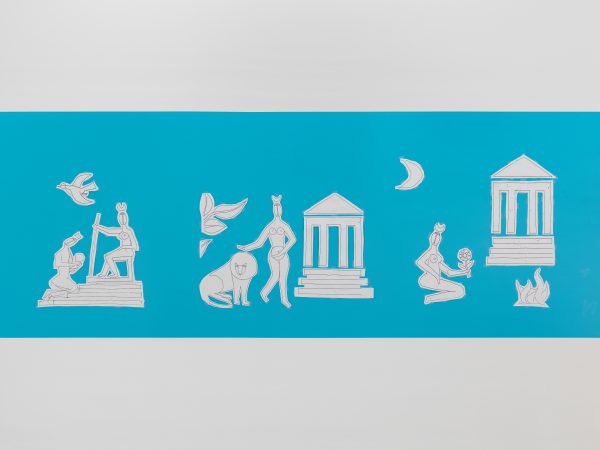 L’Arbre au Soleil et la Lune au Jungle d’Amazonas (La cité), 2019Mixed media, 3 drawings
L’Arbre au Soleil et la Lune au Jungle d’Amazonas (La cité), 2019Mixed media, 3 drawings
variable dimensionsMise en espace Jean-Baptiste Decavèle, Fonds de Dotation Denise et Yona Friedman
Edition 1/3 + 1 AP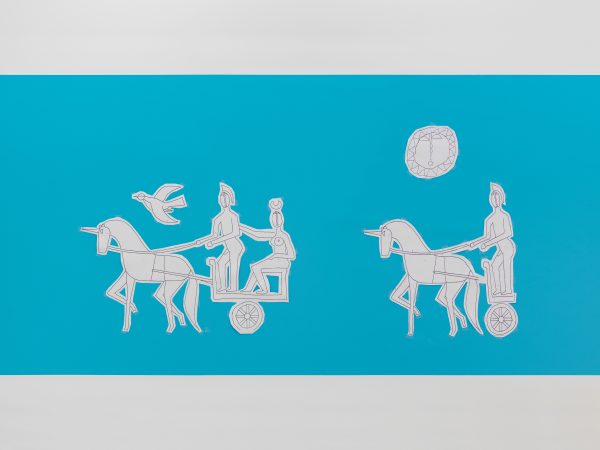 L’Arbre au Soleil et la Lune au Jungle d’Amazonas (Les voyages), 2019Mixed media, 2 drawings
L’Arbre au Soleil et la Lune au Jungle d’Amazonas (Les voyages), 2019Mixed media, 2 drawings
variable dimensionsMise en espace Jean-Baptiste Decavèle, Fonds de Dotation Denise et Yona Friedman
Edition 1/3 + 1 AP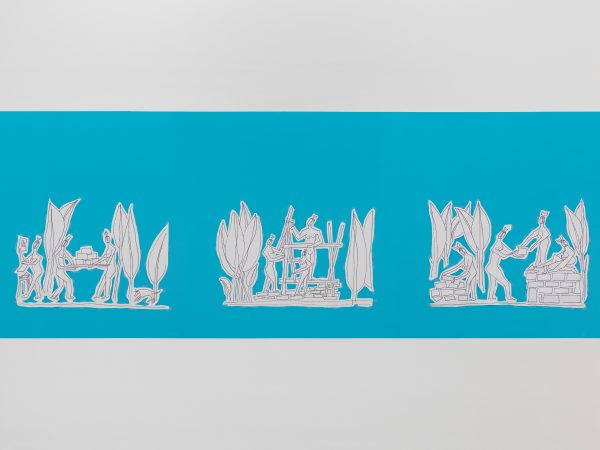 L’Arbre au Soleil et la Lune au Jungle d’Amazonas (Construire), 2019Mixed media, 3 drawings
L’Arbre au Soleil et la Lune au Jungle d’Amazonas (Construire), 2019Mixed media, 3 drawings
variable dimensionsMise en espace Jean-Baptiste Decavèle, Fonds de Dotation Denise et Yona Friedman
Edition 1/3 + 1 AP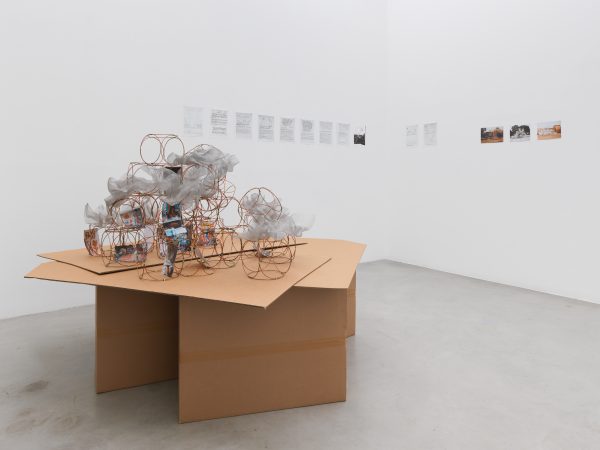 Maquette d’étude pour une iconostase. 1 copie Lambda de Biosphère. The Global Infrastrcture slideshow. 3 photos de Pavillon de Shenzhen, 2017. Photos de 33, Boulevard Garibaldi, Paris, Septembre 2009, J. B. Decavèle, 2019Mixed media
Maquette d’étude pour une iconostase. 1 copie Lambda de Biosphère. The Global Infrastrcture slideshow. 3 photos de Pavillon de Shenzhen, 2017. Photos de 33, Boulevard Garibaldi, Paris, Septembre 2009, J. B. Decavèle, 2019Mixed media
scale 1:20
variable dimensionsFonds de Dotation Denise et Yona Friedman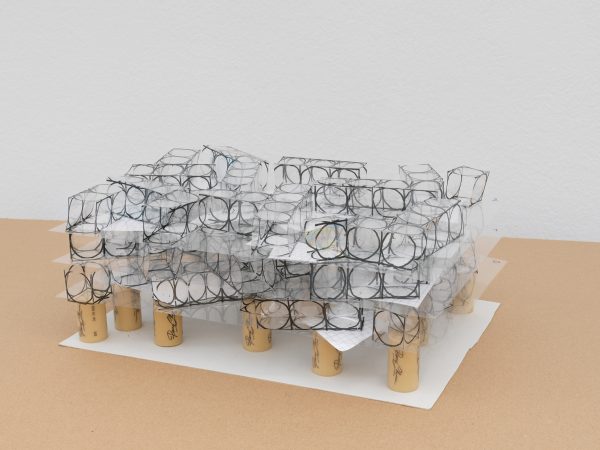 Space Chain, variation 18, maquette d’étude pour certains détails, 2017Mixed media
Space Chain, variation 18, maquette d’étude pour certains détails, 2017Mixed media
Scale 1:500Variable dimensionsFonds de Dotation Denise et Yona Friedman
Edition unique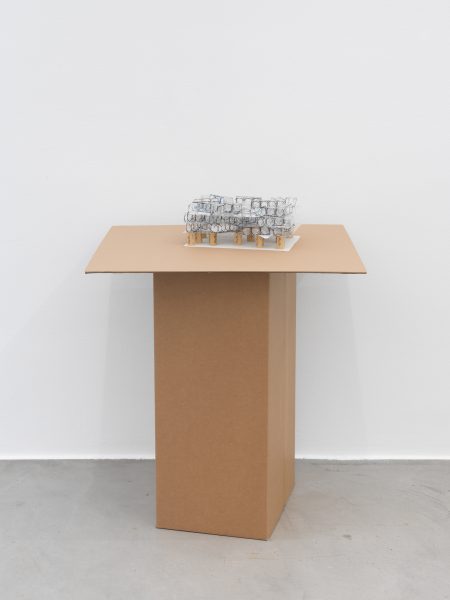 Space Chain, variation 18, maquette d’étude pour certains détails, 2017Mixed media
Space Chain, variation 18, maquette d’étude pour certains détails, 2017Mixed media
Scale 1:500Variable dimensionsFonds de Dotation Denise et Yona Friedman
Edition unique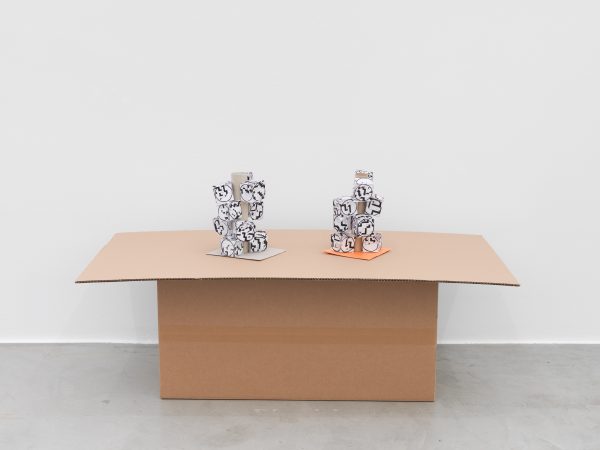 Staircase Towers, étude pour Caracas, 2016Mixed media
Staircase Towers, étude pour Caracas, 2016Mixed media
Scale 1:100 Variable dimentionsFonds de Dotation Denise et Yona Friedman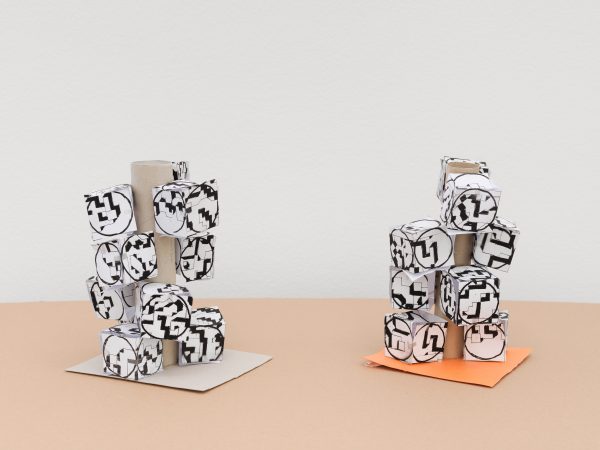 Staircase Towers, étude pour Caracas, 2016Mixed media
Staircase Towers, étude pour Caracas, 2016Mixed media
Scale 1:100 Variable dimentionsFonds de Dotation Denise et Yona Friedman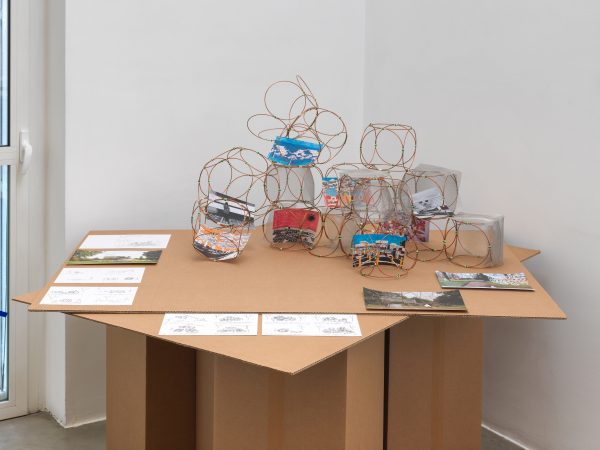 Maquette d’étude pour Le Pavillon d’été de la Serpentine Galleries. 1 copie Lambda de A summer house at the Serpentine Gallery slideshow. 1 copie d’un photomontage d’étude. 2 photos de J. B. Decavèle, 2016Mixed media
Maquette d’étude pour Le Pavillon d’été de la Serpentine Galleries. 1 copie Lambda de A summer house at the Serpentine Gallery slideshow. 1 copie d’un photomontage d’étude. 2 photos de J. B. Decavèle, 2016Mixed media
scale 1:20variable dimensionsFonds de Dotation Denise et Yona Friedman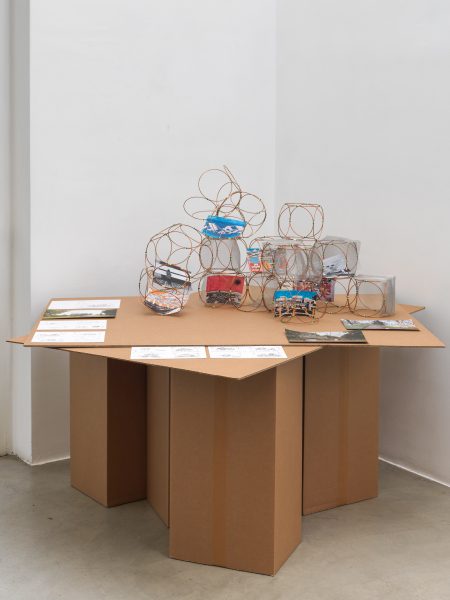 Maquette d’étude pour Le Pavillon d’été de la Serpentine Galleries. 1 copie Lambda de A summer house at the Serpentine Gallery slideshow. 1 copie d’un photomontage d’étude. 2 photos de J. B. Decavèle, 2016Mixed media
Maquette d’étude pour Le Pavillon d’été de la Serpentine Galleries. 1 copie Lambda de A summer house at the Serpentine Gallery slideshow. 1 copie d’un photomontage d’étude. 2 photos de J. B. Decavèle, 2016Mixed media
scale 1:20variable dimensionsFonds de Dotation Denise et Yona Friedman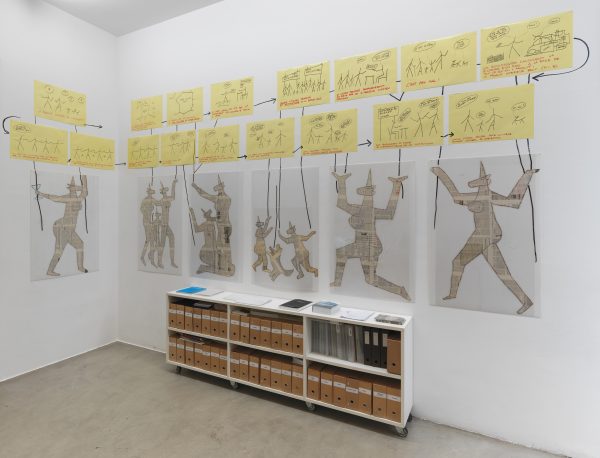 La Manifestation des Licornes (L’argent), 2009Mixed media
La Manifestation des Licornes (L’argent), 2009Mixed media
variable dimensionsFonds de Dotation Denise et Yona FriedmanEdition unique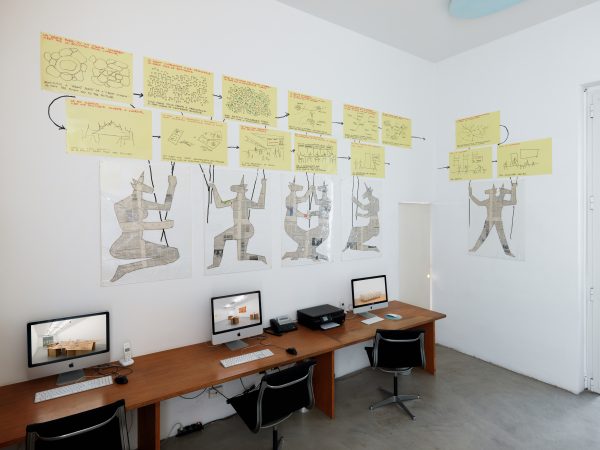 La Manifestation des Licornes (Mètropole Europe), 2009Mixed media
La Manifestation des Licornes (Mètropole Europe), 2009Mixed media
variable dimensionsFonds de Dotation Denise et Yona Friedman
Edition unique








































